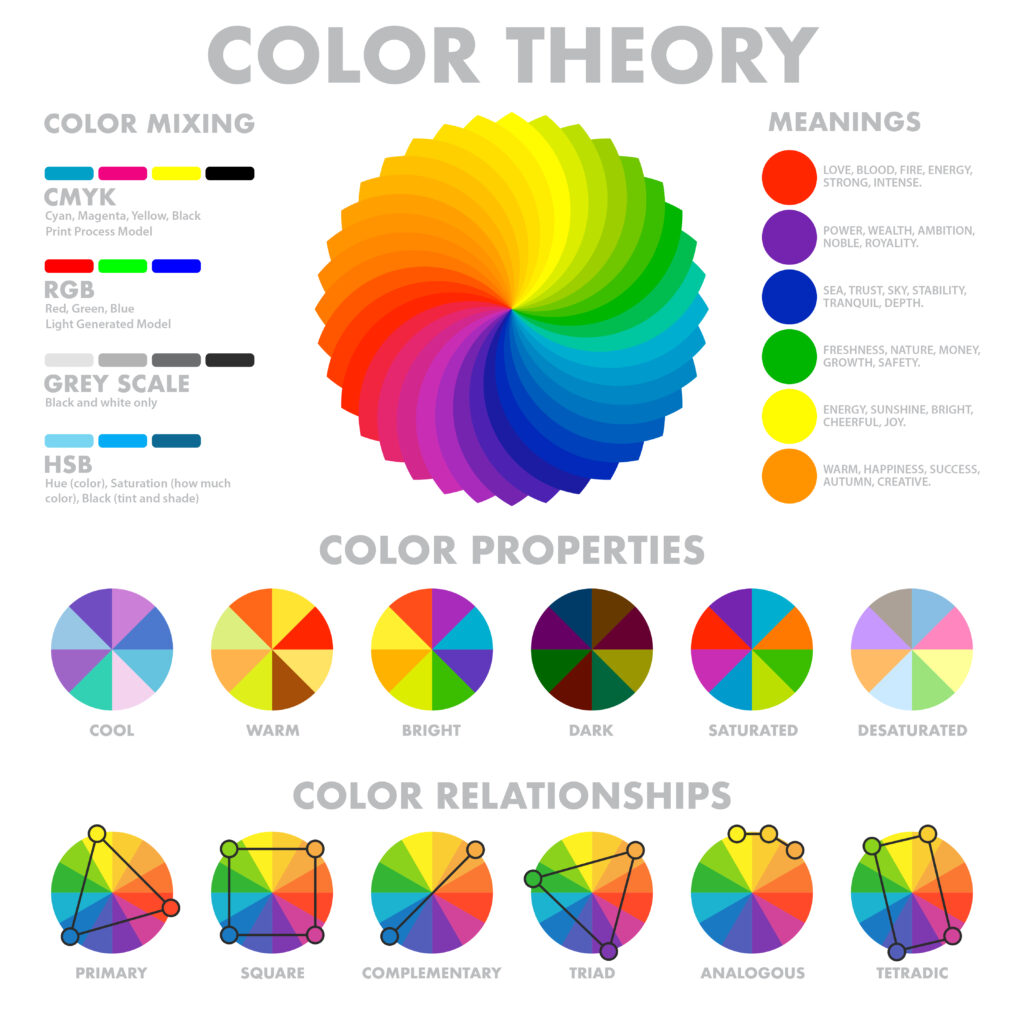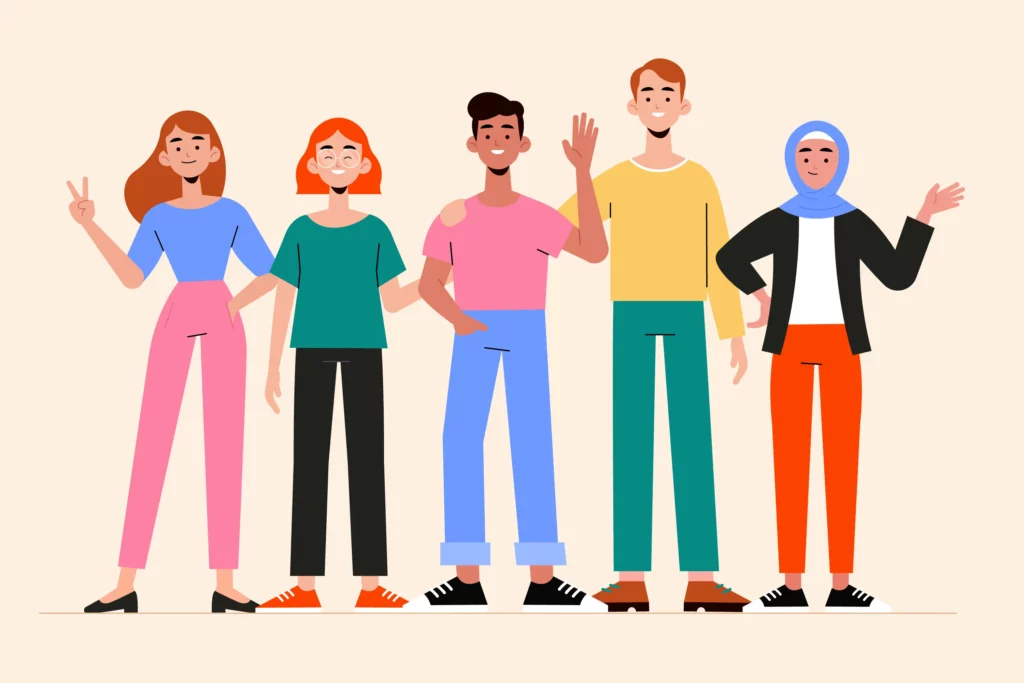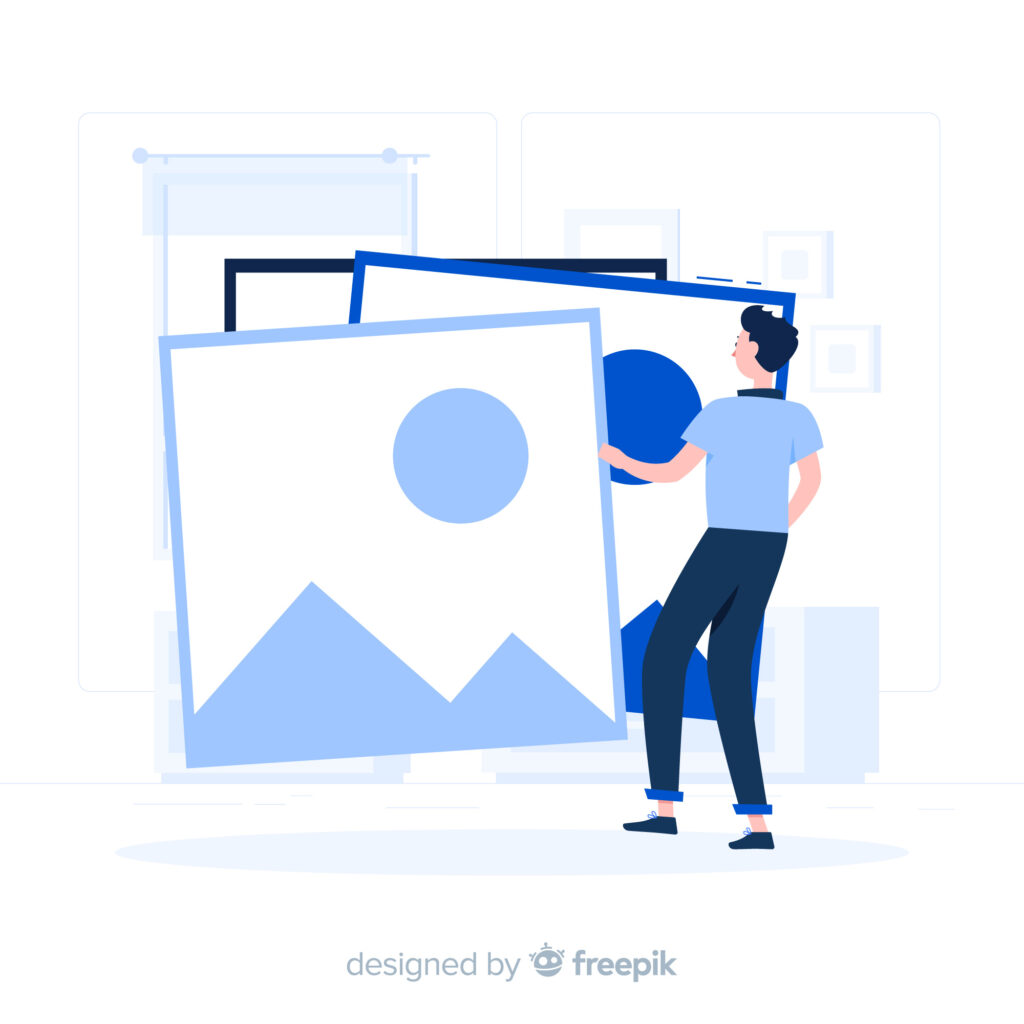We, as human beings, are visual creatures who constantly take in and process information through our eyes. That’s the reason why we should never underestimate the power of product images. Great product images can evoke certain emotions in shoppers, ultimately leading to a purchase.
While many factors can influence the decision of your potential customers, using psychology in your product photography is one way to give yourself an edge. Below we will discuss several methods to help you use product images to your advantage and increase your sales.
Table of Contents
The power of colors
It is a well-known fact that product images are of significant importance for any e-commerce website. Having the right photos in your store can influence your customers’ decision to make a purchase.
Even though there is a handful of factors to consider when deciding which image is the right one, a crucial factor is the role of color psychology. Specific colors can evoke certain emotions, and by using this knowledge, you can subconsciously influence customers to make a purchase.
For instance, red is often associated with excitement and energy, while blue is associated with trustworthiness and dependability. Moreover, bright colors are known to grab attention and create a sense of urgency. They’re also associated with positive emotions like happiness and excitement. Using bright colors in your product photos can help subconsciously communicate these emotions to shoppers and encourage them to buy.
In addition, a combination of warm colors, especially for more impulsive buyers, creates a sense of urgency, making them more likely to buy the product. On the other hand, cool colors influence those buyers who identify themselves as more conscious consumers.
Few more ways to leverage sales psychology in product images in terms of colors
- Use colors that represent your brand identity. If your brand is associated with specific colors, use them in your product images to reinforce that association.
- Use colors that match the products you’re selling. If you’re selling a product traditionally associated with a specific color, use that color in your image.
- Use colors that evoke the emotions you want to elicit. Use bright, cheerful colors if you want customers to feel happy and excited about your product. If you prefer that they should feel calm and relaxed, use softer, more subdued colors.
- Use attractive packaging: We’re hardwired to be attracted to specific colors and patterns, so take advantage of this by using eye-catching packaging in your product photos. Great packaging will help grab attention and make your products more appealing.

People in Your Photos
Seeing people in your product photos can help create a connection with the shopper and make them more likely to purchase the item. You can use models, customers, or even everyday people in your photos – as long as they look happy and excited about the product.
Furthermore, people are more likely to buy products associated with attractive individuals. The explanation is to this phenomenon is simple. Namely, putting your product next to a lovely person makes people subconsciously think that the product has great features. Thus, If you can, use attractive models in your product images to increase your chances of making a sale.
Another valuable way to increase sales by using people in your photos is to focus on their faces. Our brains naturally pay attention to faces, so concentrating on the face in your product images makes sense. When people see a face, they automatically focus on it, which can help increase trustworthiness and build rapport.
Thus, the best thing you can do in this situation is to ensure that the face in your product image is attractive and engaging. This technique can help connect potential customers and make your products more relatable.
Positive Body Language
Body language is another essential factor to consider in your product images. Your prospective clients are more likely to respond positively to images that feature people with positive body language. It includes things like smiling, making eye contact, and standing upright. By using positive body language, you can convey confidence and approachability, which will make others more likely to purchase your products.
According to statistics, up to 93% of individuals build their impression about others by their body signals. That’s why seeing people exhibiting positive body language can lead viewers to feel more positive themselves, and when your potential customers feel excited, they’re more likely to make purchases. Therefore, include images that feature people using positive body language. This scenario could be anything from a person smiling to someone standing in an expansive stance with wide arms.
Moreover, images that show your product in fun, unique ways make people feel good when they see it. It essentially helps customers see your product as something they could enjoy using and are more likely to buy.
If you want to optimize your product images in a more effective way, try adding some positive words near the image. Your potential customers will perceive the positivity of the pictures and the words, making them more likely to buy products when they see words like “love” or “excitement.” It is because we tend to associate positive emotions with products that make us happy.
That’s why in order to have higher chances of making a sale, use images that feature people with positive body language and include some positive words near the image.

Create a Sense of Scarcity
As we already mentioned, understanding sales psychology can make you ahead in your game. It is indeed useful knowledge that you can use to increase conversions and sales. By understanding how people make buying decisions, you can tap into their subconscious desires and motivation.
One way to do this is by leveraging the principle of scarcity. That’s the idea that people want what they can’t have or what is in limited supply. When people see a scarce item, they feel a sense of urgency to buy it before it’s gone.
You can create a sense of scarcity in your product images by using techniques like showing only a limited number of items available. For example, if you’re selling a limited-edition item, you can include an image that shows only a few remaining. Doing this trick will create a sense of urgency and encourages customers to buy before it’s too late.
Another way to create scarcity is by showing products in high demand. Posting an image of people clamoring for the product or even a “sold out” sign is an efficient way to do that. Either way, this type of imagery communicates that the product is popular and in short supply, prompting customers to purchase before it’s gone for good.
Finally, you can also use images to convey that there’s only a limited time to buy. Using a countdown timer or even a picture of a clock ticking down are great ideas for that purpose. This imagery creates a sense of urgency and can encourage customers to buy before it’s too late.
Images that tap into people’s desires
The brain constantly makes snap judgments and decisions based on the information it takes. When you see a product image, your brain does a similar thing- deciding if it’s something you want or something you might need.
We all have desires and wants, so why not use images that tap into those? If you sell something people want, they’re more likely to buy it. So, show them what they’re missing out on.
Use images that show off the benefits of your product
People want to see how your product will make their life better. Show them how it will solve their problem or make their life easier.
One way to increase the desirability of your products is by using what’s known as the “halo effect.” The halo effect occurs when we associate positive qualities with a person or thing based on one initial positive impression. For instance, if we see a product that looks high-quality and well-made, we may be more likely to believe that it’s also durable and long-lasting – even if we have no evidence to support that belief.
You can use the halo effect to your advantage by ensuring that your product images convey a sense of quality and craftsmanship. Use high-resolution images and ensure that the product is well-lit and focused. Avoid using stock photos – instead, opt for real-life images that show your products in use.
Another way to increase desirability is by using what’s known as “social proof.” Social proof is the idea that we’re more likely to want something if we believe other people like it, too. For example, if we see a product with many positive reviews, we’re more likely to think it’s worth buying.
By highlighting, you show potential customers that other people have bought and liked your product. Thus, you might want to include customer testimonials or reviews on your product pages.
In addition, you can use social proof to your advantage by including customer reviews and testimonials in your product images. You can also contain badges or symbols that indicate that popular publications have featured your products.
High-quality images
Studies have shown that we process images 60,000 times faster than text. So, when you’re trying to sell a product, it only makes sense to use high-quality photos that appeal to your target audience.
Images are essential for product pages because they allow shoppers to see the product in detail before purchasing. Using high-quality images, you can show off your products in the best light possible and give shoppers a better idea of what they’re buying.
Thus, If you’re selling products online, you must use high-quality images to depict the product accurately. Poor quality images will make your products look cheap and turn potential customers away. Ensure that your pictures are clear and well-lit and that they show off your products in the best possible light.
Factors to keep in mind
People are more likely to purchase items that look new or unused. Therefore, your product photos should show the item in its best condition, without any damage or wear and tear.
It’s important to remember that people often make purchasing decisions based on perceived value. It means that if your product images make your products look like they’re worth more than they are, you’re more likely to sell them. So don’t be afraid to use props, backdrops, or other elements in your photos to give your products a high-end look.
You can leverage sales psychology in your product images in a few different ways. Thus, you want to make sure that your images are high quality. Therefore, using professional photography or investing in some decent photo editing software is the most logical thing to do. Blurry, low-resolution photos will not do your products any favors.
Use images that highlight the key features and benefits of your product. If you have a new product that you want to promote, make sure the image prominently features the critical selling points. It is in your best interest that your potential customers can easily see what makes your product special.
Choose the right image
Product images are essential for e-commerce businesses. A quality image can distinguish between a purchase and an abandoned cart. Understanding basic sales psychology principles allows you to create product images that speak to your customers’ needs and desires, ultimately increasing conversions.
The image you choose should be relevant to the product you’re selling. It should also be attention-grabbing and visually appealing.

Use images that tell a story
A good photograph will tell a story about your product and what it can do for the customer. Use images that highlight your product’s features and benefits and show how people can use it in real life.
When we listen to an engaging story, there is dopamine being released which makes us feel good. Naturally, our brains respond positively to stories. That’s why stories are so powerful. And that’s why using images that tell a story can be such a powerful sales tool.
When choosing images for your product pages, think about what story you want to tell. Do you want to show your products in use? Show them in action? Or do you want to show your products in a lifestyle setting?
Whichever story you choose to tell, make sure it’s a compelling one. The more exciting and engaging the story, the more likely your customers will respond positively to your product images.
The basics for achieving that goal
Additionally, regarding product images, there are a few key things to remember to make the most of sales psychology. By understanding how people process information and what cues they look for when making purchase decisions, you can put together images more likely to lead to conversions.
Use the right colors
One of the most important things you can do is choose colors that appeal to your target market. For example, if you’re selling products aimed at men, using a lot of blue in your images can be an excellent way to communicate that your products are masculine subconsciously. On the other hand, if you’re selling products aimed at women, using softer colors like pink or light purple can help create a more feminine feel.
The right angle
Another critical thing to consider when choosing product images is the angle from which you photograph the item. For instance, if you’re selling a piece of jewelry, photographing it from above with the camera pointing down can give the viewer a sense of the item’s size and scale. It can also be helpful to use close-up shots to show details that might not be apparent from a distance.
The background
Don’t forget to pay attention to the environment of your product images. A busy or cluttered background can make a photo feel less professional, so it’s often best to stick with a simple backdrop like a white wall or plain paper. You should also ensure there’s enough contrast between the background and the product itself so that viewers can easily see what they’re looking at. Following these tips, you can create product images that are both visually appealing and informative. By choosing the right colors, angles, and backgrounds for your pictures, you can give potential customers a better sense of what your product is all about.
The lightning
Use light to your advantage when taking product photos. If you have a naturally eye-catching product, make sure it’s well-lit so potential customers can see it in its glory. Similarly, if you’re selling a more subdued product, don’t be afraid to use lighting to make it pop. Either way, good lighting will make your products look their best and help draw the eye of potential buyers.
By following these guidelines, you can create images that are more likely to appeal to customers on an emotional level and drive conversions. Remember these tips the next time you’re putting together product photos.
Don't forget, sharing is caring! :)

